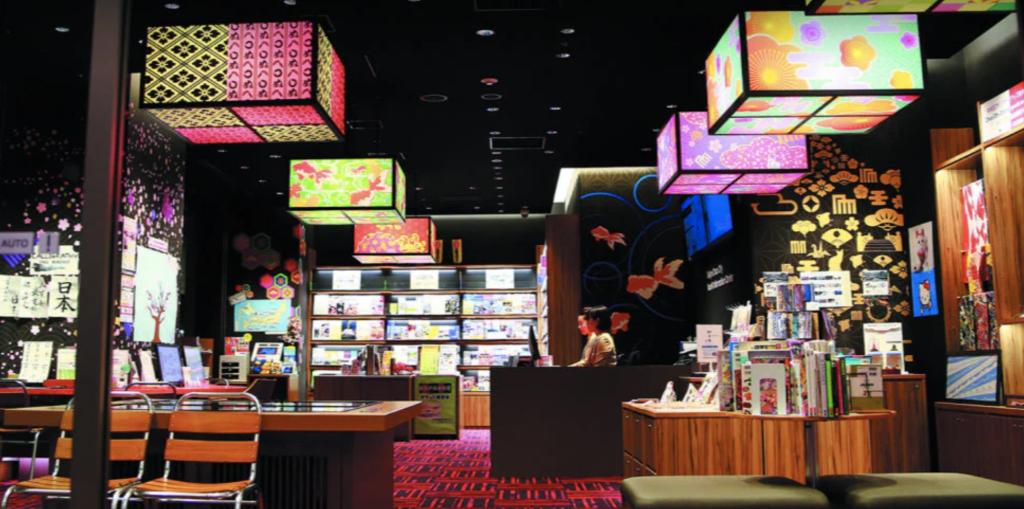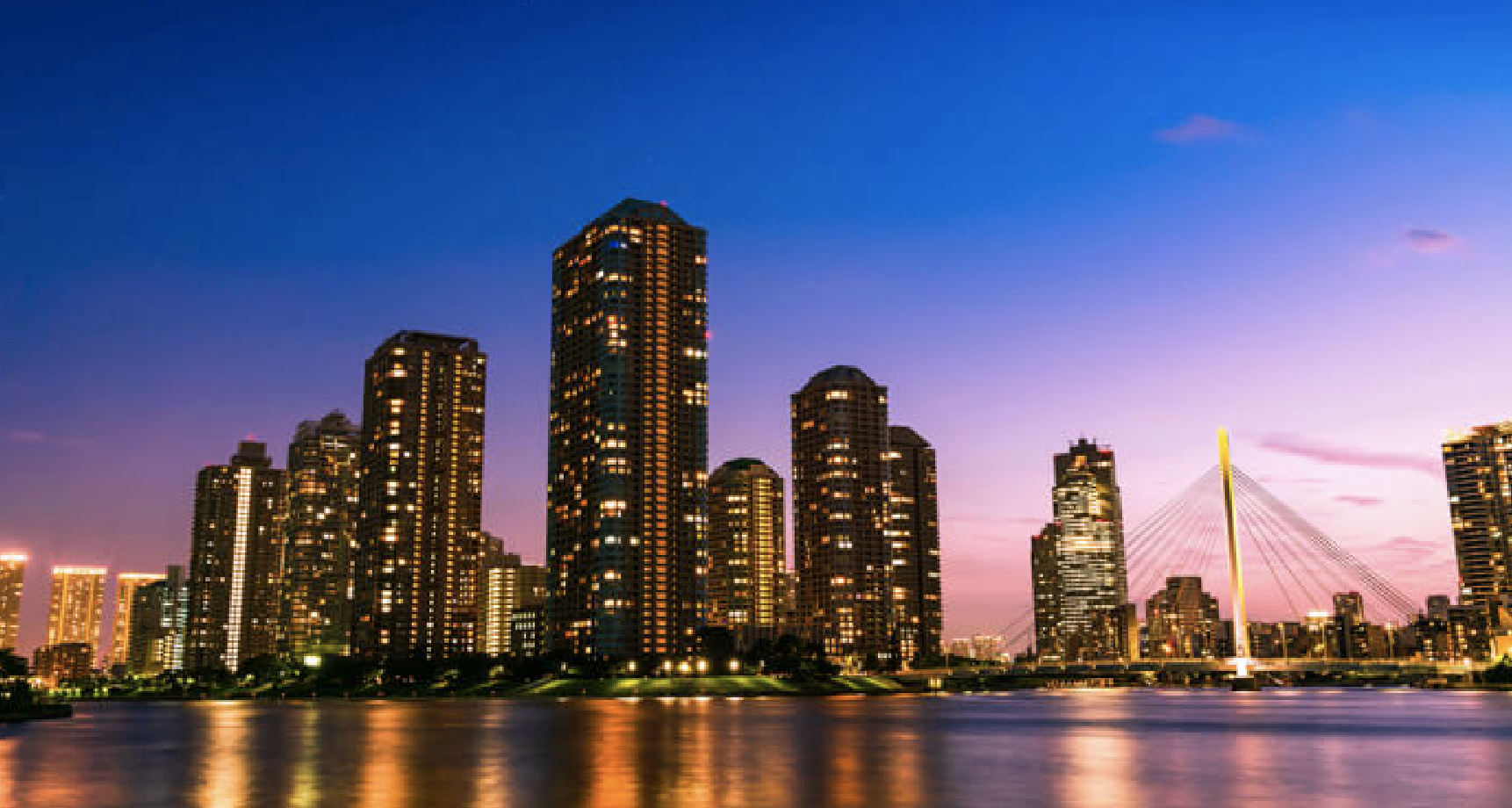Apartments for Rent in Chuo City Tokyo: Ginza, Nihonbashi, Tsukiji, and Tsukishima Guide for Foreign Residents
Introduction: Why Foreigners Choose Chuo City
Chuo City, or Chuo-ku in Japanese, is the historical and commercial heart of Tokyo. Known for world-famous districts such as Ginza, Nihonbashi, Tsukiji, and Tsukishima, this area has long attracted not only Japanese residents but also a growing community of foreign professionals, families, and short-term visitors.
For many foreigners, Chuo City represents the perfect balance between modern city life and traditional Japanese culture. Here you can enjoy Michelin-star restaurants, historic temples, local markets, and waterfront promenades—all within walking distance of luxury apartments and business hubs.
This article will serve as a comprehensive guide for foreigners considering apartments for rent in Chuo City Tokyo, covering neighborhoods, housing types, layouts, lifestyle conveniences, and what makes this central ward unique for international residents.
Chapter 1: Understanding Chuo City
1.1 Geography and Position
Chuo City sits at the very center of Tokyo, bordered by Minato City to the south and Chiyoda City to the west. Its location allows easy access to major train lines, Tokyo Station, and both Haneda and Narita airports.
The area is compact compared to other wards, but its density of businesses, residences, and cultural landmarks is unmatched. For a foreigner, this means less commuting, more access to international services, and a lifestyle that combines both work and leisure.
1.2 Historical Background
- Nihonbashi has been the commercial heart of Tokyo since the Edo period, with merchants, wholesalers, and financial institutions.
- Ginza developed as a high-end shopping and entertainment district, famous for luxury brands, theaters, and art galleries.
- Tsukiji became globally known for its fish market, attracting both chefs and tourists.
- Tsukishima grew from a reclaimed island into a residential hub, known for monjayaki and its tall apartment towers.
Understanding this mix of tradition and modernity helps foreigners appreciate why each neighborhood offers such distinct living experiences.
1.3 Population and Expat Presence
While Chuo City’s permanent population is smaller than residential wards like Setagaya, it has a higher concentration of expatriates, especially executives, diplomats, and professionals working in finance, trade, and global companies. The mix of high-rise apartments and serviced residences makes it especially attractive to those who value convenience and international-standard living.
Chapter 2: Neighborhoods and Their Character
2.1 Ginza: Luxury and Lifestyle
- Atmosphere: High-end boutiques, Michelin restaurants, art galleries, and theaters.
- Properties: Serviced apartments, luxury condominiums, compact studios for business professionals.
- Residents: Executives, diplomats, and foreign professionals who prioritize proximity to entertainment and work.
2.2 Nihonbashi: Tradition Meets Modern Business
- Atmosphere: Historic bridges, old shops alongside modern office towers, department stores.
- Properties: Modern condominiums mixed with older residential blocks.
- Residents: Professionals working in finance, trading, and banking sectors; families who appreciate the mix of tradition and urban convenience.
2.3 Tsukiji: Food Culture and Local Living
- Atmosphere: Famous for its seafood market, small eateries, and traditional atmosphere.
- Properties: Mid-rise apartments, renovated older buildings, compact housing close to local shops.
- Residents: Food lovers, chefs, and foreigners who enjoy a vibrant, authentic Japanese lifestyle.
2.4 Tsukishima and Kachidoki: Waterfront Towers
- Atmosphere: Reclaimed land with high-rise towers, modern cityscape, wide river views.
- Properties: Spacious tower apartments with gyms, pools, and concierge services.
- Residents: Families, expats with children, and long-term residents seeking modern comfort and international-style living.
Chapter 3: Property Types in Chuo City
3.1 Tower Mansions (High-Rise Condominiums)
These skyscraper apartments dominate the Tsukishima and Kachidoki skyline. They offer spacious floor plans, panoramic views, and facilities such as gyms, lounges, and 24-hour security. For foreign families, tower mansions represent the closest option to Western-style living in Tokyo.
3.2 Compact Urban Apartments
In Ginza and Nihonbashi, small but stylish apartments cater to single professionals. While space is limited, the location offers unbeatable access to offices, shops, and nightlife.
3.3 Serviced Apartments
These fully furnished units are popular among short-term expatriates and corporate employees. They often come with English-speaking staff, cleaning services, and flexible lease terms, making them stress-free for foreigners.
3.4 Renovated Traditional Properties
In Tsukiji and Nihonbashi, some older buildings have been renovated into chic residences, blending traditional architecture with modern interiors. These properties are popular among creative professionals and those who seek a more cultural living experience.
Chapter 4: Layouts and Housing Performance
4.1 Typical Floor Plans
- 1K–1LDK: Best for singles and business professionals.
- 2LDK–3LDK: Suitable for couples and small families.
- 3LDK+: Often found in tower mansions, catering to larger families.
4.2 Performance Features
- Insulation and Soundproofing: Tower mansions are equipped with modern insulation and soundproofing, ideal for international residents used to higher standards.
- Earthquake Resistance: Newer condominiums meet strict earthquake regulations, providing peace of mind for expats.
- Security: Many buildings include auto-lock entrances, security guards, and surveillance systems.
4.3 Shared Facilities
Especially in Tsukishima and Kachidoki, properties include gyms, kids’ playrooms, lounges, and rooftop gardens. These facilities make it easier for expat families to build community and feel at home in Tokyo.
Chapter 5: Daily Life Infrastructure and Expat Convenience
5.1 Transportation Access
Chuo City’s greatest advantage is connectivity.
- Tokyo Station: The country’s largest railway hub, with Shinkansen lines reaching all major cities.
- Subways: The Ginza Line, Hibiya Line, Yurakucho Line, Toei Oedo Line, and others cross the ward, ensuring easy travel to Shinjuku, Shibuya, and beyond.
- Airports: Direct limousine buses and train routes connect to both Narita and Haneda.
For foreigners, this means less commuting stress and the ability to reach international destinations quickly.
5.2 Healthcare and Clinics
Chuo City provides access to hospitals and English-speaking clinics. International residents can find specialists in internal medicine, pediatrics, and dentistry with multilingual staff. Proximity to major hospitals in Chiyoda and Minato further adds reassurance.
5.3 Shopping and Dining
- Ginza: Luxury brands, flagship stores, department stores such as Mitsukoshi and Matsuya.
- Nihonbashi: Coredo Muromachi, traditional stores, and a balance of modern and old.
- Tsukiji: Fresh produce, seafood markets, small eateries popular among chefs worldwide.
- Tsukishima: Local restaurants, casual dining, and the famous monjayaki street.
Foreigners can enjoy both high-end international products and authentic Japanese markets within walking distance.
5.4 Education and Schools
Though Chuo City itself does not host large international schools, its location makes commuting to nearby international institutions in Minato, Shibuya, or Koto City easy. For younger children, bilingual preschools and after-school programs are available within the ward.
Chapter 6: Lifestyle Patterns for Foreign Residents
6.1 Single Professionals
- Where they live: Compact apartments in Ginza or Nihonbashi.
- Why: Proximity to offices, nightlife, and transport.
- Example lifestyle: Morning coffee in Nihonbashi, walking to work in Marunouchi, dinner in Ginza.
6.2 Couples and DINKS
- Where they live: Stylish apartments or serviced residences in Nihonbashi or Tsukiji.
- Why: Blend of tradition and modernity, cultural activities, access to fine dining.
- Lifestyle: Enjoying department store shopping, weekend strolls by Sumida River, cultural festivals.
6.3 Families with Children
- Where they live: Tower mansions in Tsukishima and Kachidoki.
- Why: Spacious layouts, security, playgrounds, and river views.
- Lifestyle: Children’s schools nearby, grocery shopping at large supermarkets, community events in tower complexes.
6.4 Short-Term Residents
- Where they live: Serviced apartments in Ginza or Nihonbashi.
- Why: Flexible contracts, furnished rooms, and English-speaking staff.
- Lifestyle: Efficient commuting, minimal setup, enjoying Tokyo in a short period.
Chapter 7: Property Viewing and Renting Steps
7.1 Viewing Apartments
When viewing properties in Chuo City, foreigners should pay special attention to:
- Noise levels: Proximity to busy roads or nightlife districts.
- Sunlight: Many tower mansions offer spectacular views, but some units may lack direct sunlight.
- Ventilation: Especially important in older properties in Tsukiji.
- Facilities: Ensure gyms, playrooms, or concierge services meet expectations.
7.2 Lease Contracts and Fees
Chuo City properties often have higher rents compared to suburban areas. Foreigners should budget for:
- Rent (usually premium in Ginza and Nihonbashi).
- Management fees (common in tower mansions).
- Deposit and key money (varies by property).
Many properties, especially serviced apartments, provide simplified contracts suitable for expats.
7.3 Preparing to Move In
- Confirm internet availability (fiber-optic is common in towers).
- Arrange furniture delivery (unless furnished).
- Set up utility accounts (electricity, gas, water).
- Register residence at the local ward office.
Chapter 8: Enhancing Daily Life in Chuo City
8.1 Reducing Living Costs
While Chuo City is known for high living standards, foreigners can reduce expenses by:
- Shopping at Tsukiji’s fresh markets rather than department stores.
- Using local supermarkets in Tsukishima.
- Taking advantage of train passes for commuting.
8.2 Building Community
Foreigners often connect through:
- Tower mansion communities in Tsukishima.
- Language exchange events in Ginza cafés.
- International networking groups centered around Tokyo Station.
8.3 Local Festivals and Culture
- Ginza Festival: Celebrates fashion, art, and food.
- Nihonbashi-Kyobashi events: Highlight Edo-period traditions.
- Tsukiji Hongwanji Temple festivals: Blend of Buddhist traditions and community gatherings.
Participation in these events helps foreigners immerse themselves in Japanese culture while feeling part of the local community.
Conclusion
Chuo City offers a unique living experience for foreigners in Tokyo. With neighborhoods ranging from luxury Ginza to traditional Tsukiji and modern Tsukishima, it accommodates diverse lifestyles—from executives and families to short-term residents.
Key takeaways for foreigners considering apartments for rent in Chuo City Tokyo:
- Location is everything: Access to Tokyo Station, business hubs, and cultural areas is unparalleled.
- Property variety: From compact studios to high-rise family apartments.
- Balanced lifestyle: Work, shopping, dining, and cultural immersion all within one ward.
For international residents, Chuo City is not just a place to rent an apartment—it is a gateway to experiencing both Japan’s heritage and its modern metropolitan energy.

